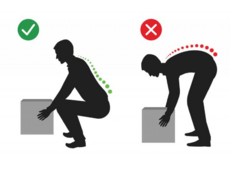Work Conditioning
Original Editor - Matt Huey
Top Contributors - Matt Huey, Lucinda hampton, Kirenga Bamurange Liliane and Kim JacksonDefinition[edit | edit source]
Work conditioning is a program that is designed with the emphasis on the physical conditioning which includes strengthening, endurance, flexibility, motor control and cardiovascular function[1].
Work conditioning is most often associated with injured workers and preparing them to return to their work duties. The injured worker has a physically demanding job and due to the time from the injury, the injured worked has become "deconditioned". The goal is to improve not only physical functionals and capabilities, but also psychological beliefs.
This is not to be confused with work hardening. Work hardening is a program that has the participant perform vocation specific activities and will have a longer duration.
Program Design[edit | edit source]
A work conditioning session will last anywhere from 2 to 4 hours and be performed 3 to 5 days a week. The program is usually 2-4 weeks.
The program will consist of cardiovascular, flexibility, and strength activities along with work simulation type activities.
Work simulation activities can include:
- Lifting (floor to waist, floor to overhead, waist to overhead, etc)
- Carrying
- Pushing/Pulling
- Fine motor manipulation
- Climbing
- Circuit training
- Balance activities
Research[edit | edit source]
Most research with work conditioning focuses on injured workers with back or neck pain. There is a level of uncertainty with the actual benefit in reducing the sick time with work conditioning programs.
It has been found that programs that are light versus intense, show no decrease in sick time[2]. Likewise, in people with acute back pain, work conditioning has not been found to reduce sick time [1].
There is some evidence that the addition of cognitive-behavioral approach along with work conditioning does show benefit [3].
To summarize, work conditioning has shown more favorable results with people dealing with chronic back pain and utilized an intense program with cognitive-behavioral approaches.
References[edit | edit source]
- ↑ 1.0 1.1 Schaafsma F, Schonstein E, Whelan KM, Ulvestad E, Kenny DT, Verbeek JH. Physical conditioning programs for improving work outcomes in workers with back pain. Cochrane Database of Systematic Reviews 2010, Issue 1. Art. No.: CD001822. https://d1wqtxts1xzle7.cloudfront.net/66581689/Physical_conditioning_programs_for_impro20210423-26974-y9hdbh-with-cover-page-v2.pdf?Expires=1654794870&Signature=Hk0QwNZy9Hu065rjV79dqGC7~t5ZepDPdqeXrd8do1nuVK9Gdqk9E0YJ7c1wI7S9noSzfJ8hDzfxa9SwcT7p86X-u-hLwkROTY1Nihbqphb2cgVYNM0eanKaki0ymCoY94tZuTbcFVPe8tdcP9JW4pbxMov3G5C2JLZBKZJboKyh5N-BUzg4r1Op9hYG17mpZwiPMDmWl5I~AR1P~99nq-f6lTuFxIqPIfqxD2twQ-UPLKijR7lsuJmbR1RryuTNHSAWOcC1pn8KlNqs9m3EjUuUcQ0q54mHwhtBTN-KJpYFRF1wFbkkbIG4885KPFo761dT1HAAaPLLfXeJmvmToQ__&Key-Pair-Id=APKAJLOHF5GGSLRBV4ZA
- ↑ Schaafsma FG, Whelan K, van der Beek AJ, van der Es-Lambeek LC, Ojajärvi A, Verbeek JH. Physical conditioning as part of a return to work strategy to reduce sickness absence for workers with back pain. Cochrane Database Syst Rev. 2013 Aug 30;2013(8):CD001822. doi: 10.1002/14651858.CD001822.pub3. PMID: 23990391; PMCID: PMC7074637. https://www.ncbi.nlm.nih.gov/pmc/articles/PMC7074637/
- ↑ Schonstein E, Kenny DT, Keating J, Koes BW. Work conditioning, work hardening and functional restoration for workers with back and neck pain. Cochrane Database Syst Rev. 2003;(1):CD001822. doi: 10.1002/14651858.CD001822. Update in: Cochrane Database Syst Rev. 2010;(1):CD001822. PMID: 12535416. https://www.cochranelibrary.com/cdsr/doi/10.1002/14651858.CD001822/full








